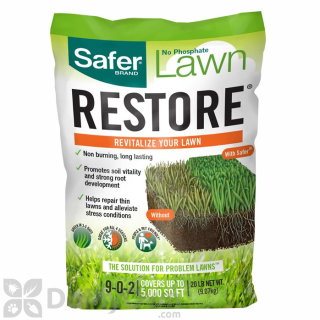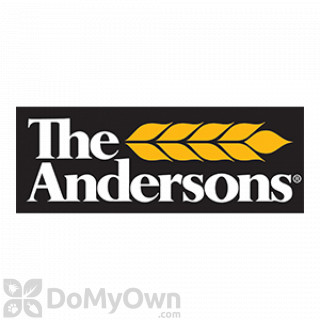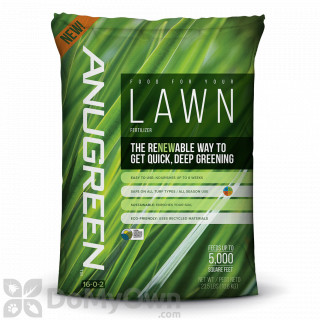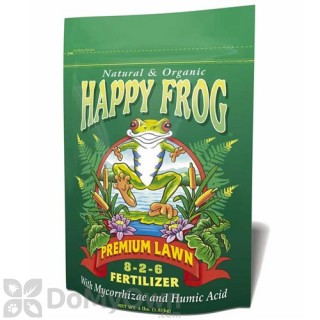One of the oldest fertilizers around, milorganite is a fertilizer that doesn’t receive half the attention it’s due. Made out of heat-dried microbes that have ingested organic matter found in wastewater, milorganite is manufactured primarily in Milwaukee.
If you’re a fan of recycling, you’ll love milorganite. This natural fertilizer makes the best use of nutrients so that you can harness all of their benefits for your lawn and garden.
Here’s what you need to know about milorganite fertilizers – and why you might want to consider some milorganite alternatives.
What is Milorganite – and How is it Made?
When you think of recycling, you likely think of tossing glass, cardboard, and plastic into your recycling bin. In the creation of milorganite fertilizer, it’s nutrients, instead of these man-made creations, that are recycled.
Wastewater enters a reclamation facility, where all solid materials are filtered out (that includes things that end up in the water accidentally or exist there organically, including things like sand, plastic, and debris).
Then, microbes are added to the water so that they can digest the nutrients there. An aerator is added to supply oxygen so that the ideal environment can be created for these microbes to chow down and make the most of the nutrients.
Eventually, after all of the nutrients have been consumed, the microbes die. At this point, binding agents can be added to the water which causes microbes to clump up and then settle to the bottom sedimentation tanks. Once all of the microbes have settled, the water is returned to the lake and the microbe clumps are sent to another processing facility for drying and dewatering.
Moisture is removed from the clumps of microbes with belt presses, leaving behind a substance that looks much like wet cardboard. Then, this material is dried in a rotary kiln dryer heated to temperatures as hot as 1200 degrees Fahrenheit, heating the milorganite to a temperature of 176. This high heat kills any pathogens that might still be present and makes the milorganite safe for use.
Of course, there are several testing and regulatory processes that the milorganite must go through before it reaches your lawn, too.
How Does Milorganite Work?
Now that you know how milorganite is made, you might be wondering how, exactly, it works. Here are the basics.
You probably already know that plants need water, sunlight, and nutrients to thrive; sunlight helps plants complete the act of photosynthesis, which then produces chlorophyll, while the roots of plants absorb nutrients and water from the soil to help it grow.
Milorganite offers a slow, steady flush of nutrients, making these nutrients available to plants exactly when they need them. It’s different from other fertilizers, particularly synthetic fertilizers, that cause a quick, excess flush of nutrients immediately after fertilization.
About 80% of the nitrogen found in milorganite is water-insoluble, meaning it is delivered to the roots primarily through microbial soil activity. Temperatures must be between 55 and 85 degrees Fahrenheit for this to occur and the soil needs to be moist.
Then, the microbes that exist naturally in your soil will break down the nutrients in the milorganite to make the nutrients available to your plants. The nice thing about using milorganite on your plants? If conditions aren’t ideal when you apply it – say, for example, it is too warm, cold, or dry – the nutrients won’t be washed away. Instead, they’ll stay right where they are, waiting until the optimal conditions to fertilize your plants.
These slow-release nutrients are available for up to 10 weeks so that you don’t have to apply milorganite to your lawn quite as often. As mentioned earlier, the nutrients don’t wash away as readily and are less likely to leach into waterways – so they’re also better for the environment.
What Grasses Does Milorganite Work Best For?
There are some basic lawn care tips you’ll want to heed whenever you’re caring for your lawn, but especially before applying milorganite. To keep a healthy lawn, you will want to keep your grass longer and mow more often. Allow grass clippings to remain on your lawn after you mow for added fertilizer – these clippings will augment and complement the work your milorganite application is doing!
Any kind of grass will benefit from an application of milorganite fertilizer. The application timelines and instructions are a bit different depending on whether you are growing a cool- or warm-season grass, but some grass types that will especially benefit from milorganite include:
- Kentucky bluegrass
- Perennial ryegrass
- Fescue
- Bahiagrass
- Zoysia grass
- Centipedegrass
- St. Augustine grass
- Bermuda grass
How and When to Apply Milorganite

You can apply milorganite every ten weeks during the growing season (occasionally every eight, depending on what kind of grass you are growing).
You don’t have to water in a milorganite after applying. It will stay on the soil until water and temperature conditions are right, though watering can speed things up a bit.
If you need to overseed your lawn, you can mix the grass seed in with the milorganite. This is an effective and time-efficient way to fertilize and spread seed at the same time. Just mix four parts of milorganite with one part seed by weight.
In general, you will apply about 32 lbs of milorganite for every 2,500 square feet.
Your lawn needs to eat, just like you do. You should fertilize with milorganite about four times per year. Use it as the primary fertilizer rather than in combination with other fertilizers to prevent overtaxing your soil and plants.
Northern grasses, like Kentucky bluegrass, perennial ryegrass, and fescue should be fertilized with milorganite about four times per year, starting in the spring after the last frost. Wait until temperatures are consistently in the 60s during the day.
Your last application of milorganite, for cold season grasses, such be as late in the season as possible without butting into the first snowfall or deep freeze.
If you are using milorganite on a warm-season grass, you can also fertilize four times per year, but ideally only in the spring and summer feedings. Fertilizing with any kind of fertilizer, including milorganite, can cause a flush of growth that can kill your plants. Wait to apply your first application of the season in the spring until temperatures are consistently in the 70s.
5 Best Milorganite Alternatives
Milorganite is a wonderful fertilizer, containing the perfect amount of calcium, iron, and phosphorus to keep your lawn healthy. However, it can be challenging to find – it’s not manufactured in very many places and with an increase in demand, there is a sharp decrease in supply (and a major hike in prices).
Because of this, it’s important to be on the lookout for reasonable alternatives to milorganite. When you’re searching, you’ll want to look for one that contains a high nitrogen content yet won’t burn your lawn. It should be slow-release and, when possible, organic.
Here are some of the best alternatives to milorganite.
1. Safer Brand Lawn Restore

Safer Lawn Restore Fertilizer is a new and improved formulation of Safer Ringer Lawn Restore II, with 25% more coverage that covers up to 5000 square feet per 20-pound bag.
Why DoMyOwn?DoMyOwn.com offers professional-grade insecticides to DIYers while ensuring proper storage of chemicals. Couple that with their impressive customer service and knowledgeable staff, it’s the #1 choice.
Safer Brand Lawn Restore is just as easy to apply as milorganite and offers an NPK ratio of 9-0-2 – it is high in nitrogen just like milorganite. It will improve a thinning lawn year-round and also promote vigorous growth. It has a lower cost and works a bit faster than milorganite, too, helping to promote year-round growth and coverage.
It works well on both warm and cool-season types of grass but does require watering immediately after application, unlike milorganite.
2. Scotts Green Max Lawn Food

Total Nitrogen 27%, Soluble Potash 2%, Sulfur 10%, Iron 5%
2-in-1 formula which supplements and boosts the lawn with iron while feeding it
Why DoMyOwn?DoMyOwn.com offers professional-grade insecticides to DIYers while ensuring proper storage of chemicals. Couple that with their impressive customer service and knowledgeable staff, it’s the #1 choice.
This alternative to milorganite is a two-in-one blend that, though not organic, can be used on any grass type and is safe to use during any season.
Like milorganite, it also offers a dose of iron in addition to nitrogen. It has a 27-0-2 NPK ratio and will work quickly, helping your lawn green up in as little as three days. It can be used with a spreader and applied as often as every six weeks.
Unlike milorganite, it’s also important to note that Scotts can be applied on a dry day.
3. Andersons Turf Fertilizer 16 – 4 – 8

Contains micronutrient Iron and other essential nutrients which work together to help boost the growth and development of turf, prevent deficiencies and improve the initial color response for greener grass.
Why DoMyOwn?DoMyOwn.com offers professional-grade insecticides to DIYers while ensuring proper storage of chemicals. Couple that with their impressive customer service and knowledgeable staff, it’s the #1 choice.
Andersons is a bit more balanced, serving as a good alternative to milorganite in that its nutrients are released slowly. It can help prevent nutrient deficiencies and provide your lawn with the nutrients it needs to grow strong and vigorously. It includes phosphate, potash, and nitrogen in addition to iron, something that’s essential for good grass growth.
Like milorganite, it needs temperatures between 55-60 degrees Fahrenheit to be effective. It is sold in a large 50 lb bag so it’s easy to buy in bulk for a larger lawn.
4. Anugreen 16 – 0 – 2 Fertilizer

Anugreen 16-0-2 Fertilizer is a specially formulated lawn food that provides instant, deep greening which lasts for up to 8 weeks.
Why DoMyOwn?DoMyOwn.com offers professional-grade insecticides to DIYers while ensuring proper storage of chemicals. Couple that with their impressive customer service and knowledgeable staff, it’s the #1 choice.
Anugreen is a specialty fertilizer that will provide instant greening that lasts up to eight weeks. It’s a homogeneous fertilizer that offers a slow, immediate release, using renewable and recycled organic materials just like milorganite.
It is USDA-certified and has a high nitrogen content. It’s best for use on cool and warm-season turfgrass like St. Augustine, centipede, bermudagrass, Kentucky bluegrass, fescue, perennial ryegrass, bentgrass, and zoysia.
5. FoxFarm Happy Frog Premium Lawn Organic Fertilizer 8-2-6

Happy Frog Premium Lawn Organic Fertilizer is pH balanced, and its blended with premium organic ingredients like bat guano, kelp meal, bone meal, feather meal and humic acid, a naturally occurring organic material that is formed when organic matter decomposes.
Why DoMyOwn?DoMyOwn.com offers professional-grade insecticides to DIYers while ensuring proper storage of chemicals. Couple that with their impressive customer service and knowledgeable staff, it’s the #1 choice.
Another organic fertilizer that is an excellent milorganite alternative is FoxFarm Happy Frog. This fertilizer is another that’s more balanced, fertilizing your lawn without requiring the use of harsh chemicals.
It contains all-natural ingredients like bone meal, bat guano, humic acid, and kelp meal. It also has 20 species of beneficial microbes to help convert fertilizers into an easy-to-use format for slow-release feedings all season long.
When to Consider a Milorganite Alternative
Using an alternative to milorganite is a good idea for many gardeners who can’t find milorganite in stores where they live. It’s a tough fertilizer to find, particularly if you don’t live in the Midwest, where it is produced.
All other things being equal, milorganite is perhaps the best organic fertilizer you can use on your lawn – but it’s tough to find. Therefore, choosing a milorganite alternative can be a smart, economical choice.
Milogranite FAQ
Milorganite contains nutrients like nitrogen, phosphorus, potassium, calcium, iron, and magnesium. It is made out of heat-dried microbes that have been processed to add the utmost level of nutrients to your lawn.
Yes. Milorganite is often considered the best kind of fertilizer you can use for your lawn, since it is all-purpose and slow-release, meant to be used safely on all kinds of plants like lawns, flowers, shrubs, trees, and vegetables. It can help prevent pests and diseases by encouraging healthy growth, too.
It is possible to use too much milorganite, just as you can with any other fertilizer. However, since it releases nutrients so slowly, you likely won’t notice any ill effects. If you know you put down too much milorganite, give it some time – overuse can encourage the development of weak, shallow roots and excessive blade growth. This can dry out the soil, invite fungal disease, and make the grass less resistant to temperature extremes.
There is a serious consumer demand for milorganite, which is why it is so expensive and hard to find. Although it can still be purchased, it is difficult to find it during the current shortage – and it’s even tougher to find it at reasonable prices, hence the need for viable milorganite alternatives.

Comments
Loading…